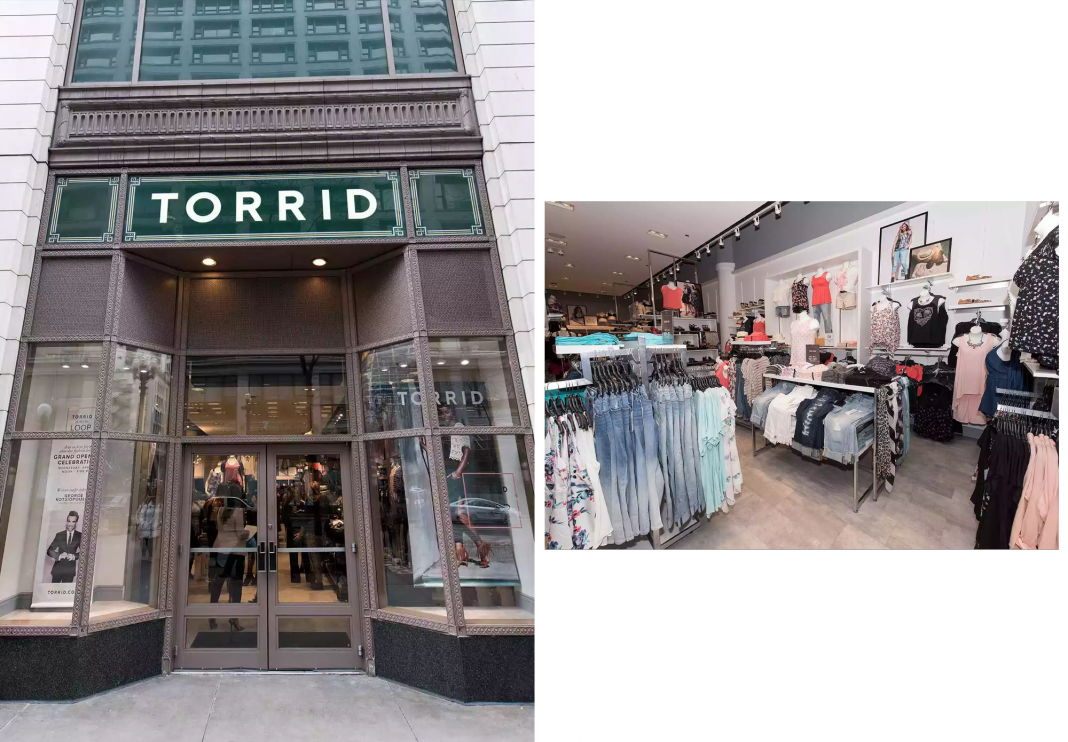Torrid, the beloved plus-size fashion brand known for empowering women through size-inclusive style, is undergoing a major transformation. In a bold move to restructure its business and lean into its growing digital footprint, the company has announced it will shutter up to 180 underperforming stores across the U.S. by the end of 2025. The decision follows a dip in the company’s quarterly performance. Net sales dropped from $279.8 million to $266 million in the first quarter of 2025 — a 4.9% decline compared to the same period the previous year. CEO Lisa Harper remains optimistic, citing the shift as a strategic investment in long-term growth.
A strategic pivot to digital dominance
“We’re accelerating our transformation to a more digitally led business,” Harper said in a company statement. “This includes optimizing our retail footprint. We now plan to close up to 180 underperforming stores this year—allowing us to reduce fixed costs and reinvest in areas that drive long-term growth, including customer acquisition and omnichannel enhancements.”
:max_bytes(150000):strip_icc():focal(577x409:579x411):format(webp)/torrid-store-exterior-chicago-2015-2-061125-b98605b003d946118969139bd0892019.jpg)
The retail giant, which once boasted over 650 locations at its peak, has already reduced that number to 632 as of May 2025. Harper emphasized that Torrid’s online ecosystem—now accounting for nearly 70% of the brand’s total demand—is the future of the business. The closures are not just about cost-cutting. They reflect a broader trend across retail as more consumers choose to shop online. Torrid’s leadership is betting on digital agility to keep the brand relevant in a fast-evolving marketplace.
“We remain in a strong financial position and are executing with clarity and focus,” Harper added. “I’m incredibly proud of our team’s commitment to delivering innovative product, deepening customer connections, and building a more agile, resilient business for the future.”
From mall mainstay to cultural force
Torrid opened its first store in 2001 in Brea, California, and quickly gained traction with its commitment to fashion-forward designs for sizes 10 to 30 and bra sizes 36C to 54D—segments largely overlooked by mainstream fashion at the time.
By the 2010s, Torrid had become a cultural touchstone, resonating with a generation of women who finally saw their body types reflected in trendy clothing. The brand earned celebrity endorsements and partnerships that helped catapult it to national visibility.
:max_bytes(150000):strip_icc():focal(753x391:755x393):format(webp)/torrid-store-interior-chicago-2015-061125-ed24585f61ab4766bed6c3d23e51d5f7.jpg)
Oscar nominee Gabourey Sidibe famously wore a Torrid dress to her first-ever Cannes Film Festival red carpet, later choosing the label again for SXSW in 2017. Actress and comedian Rebel Wilson collaborated with the brand for two highly successful capsule collections in 2015 and 2016. “The reaction I’ve received from the first collection has been so overwhelmingly positive,” Wilson said at the time. “I’m loving seeing the pictures of girls and women in my clothes on social media, feeling confident and loving themselves.” Supermodel Ashley Graham, now a household name and body positivity advocate, got her start by modeling in early Torrid campaigns. Actress Adrienne C. Moore, known for her role on Orange Is the New Black, fronted a series of denim campaigns for the brand in 2014 and 2016.
Facing the challenges of a changing market
Despite its influence and early dominance in the plus-size space, Torrid is not immune to the challenges plaguing the wider retail industry. In addition to falling net sales, the brand’s gross profit margin dipped from 41.3% to 38.1% in the first quarter of 2025, further prompting the leadership team to reassess its cost structure.
The competitive landscape has also shifted. In recent years, the plus-size market has expanded, with brands like Universal Standard, Good American, and even fast fashion players entering the space with size-inclusive offerings. While this increased representation is a win for consumers, it’s created new pressures for established brands like Torrid to innovate.
The company is now focusing on what it does best—intimate customer relationships, curated fashion, and community engagement—delivered through a more agile, tech-forward model. Investments in mobile shopping, virtual fittings, and personalized marketing are expected to help Torrid better connect with its digitally native audience.
What’s next for Torrid and the plus-size fashion world?
As Torrid prepares to close nearly a third of its remaining brick-and-mortar locations, questions about the future of plus-size retail linger. Will fewer physical stores limit access for customers who value in-person fittings? Or will the brand’s expanded digital capabilities offer even more personalized and inclusive experiences?
If Torrid’s leadership has its way, it will be the latter.
By aligning its resources toward a more flexible, omnichannel business model, the company hopes to continue leading the charge in plus-size fashion while remaining responsive to changing consumer needs. And while storefronts may disappear in some neighborhoods, Torrid’s legacy of empowerment, visibility, and style endures.
From red carpet moments to viral collections, the brand has already made an indelible mark on fashion culture. Now, it’s rewriting the rules for how that legacy continues in the digital age.






